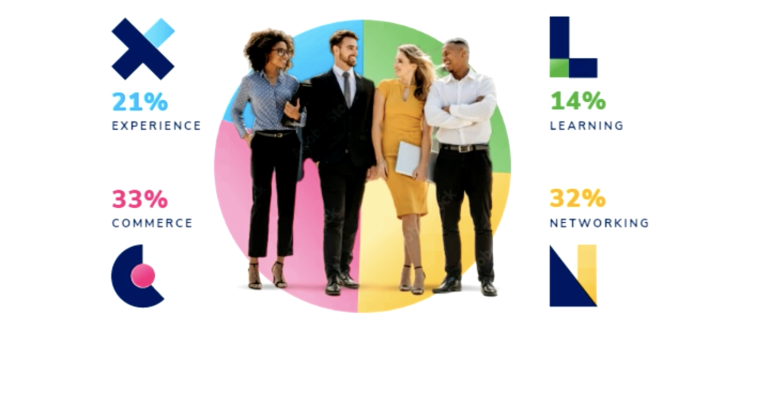Exhibitors aren’t all created equal. If organizers aren’t asking about, or don’t understand, exhibitors’ priorities and objectives, they may be missing opportunities to improve satisfaction levels and grow their events.
The latest Freeman Trends Report dives into exhibitor objectives, profiling their survey respondents based on what they identify as most important to them at events: commerce, networking, learning opportunities, or the overall experience.
 In a May 1 MeetingsNet webinar, Ken Holsinger, (right) senior vice president, strategy, at Freeman, walked attendees through the report. For each of the four groups, he discussed the exhibitor profile, including drivers and key characteristics.
In a May 1 MeetingsNet webinar, Ken Holsinger, (right) senior vice president, strategy, at Freeman, walked attendees through the report. For each of the four groups, he discussed the exhibitor profile, including drivers and key characteristics.
For example, the survey found that exhibitors whose main objective is networking (32 percent of exhibitor respondents) tend to value connecting with attendees in advance, pre-scheduling meetings, and getting leads (versus closing sales); they are less interested in introducing new products and tend to have small to midsize booths.
Learning-focused exhibitors (14 percent) by comparison tend to be larger companies with more than 2,000 employees who are looking for opportunities to speak, lead roundtables, and run hands-on demos. They’re more focused on leads than on closing sales and are more likely than other exhibitors to be creating customer events of their own.
Speaking opportunities and pre-set meetings aren’t critical to exhibitors who indicate they’re focused on the experience. Instead, that group (21 percent) is concerned with the ease of exhibiting, lead retrieval, and predictable costs. Holsinger sees these exhibitors as a red flag. “It's probably an exhibitor you should pay attention to. Maybe it’s a first-time exhibitor struggling with navigating your event or a long-time exhibitor [with a new exhibit manager].”
The commerce-focused exhibitor (33 percent) is driven by introducing new products, providing demos, and completing sales. They tend to be from smaller companies and are more likely to change the number of events where they are exhibiting.
For more on addressing the needs of each exhibitor profile, the on-demand webinar and downloadable report are now available on MeetingsNet. Here are four other takeaways from the information-packed session:
• Newbies: The report found a major shift in the age of exhibit marketers and exhibit managers. The average age has dropped from over 52 to 47 in just the past eight months. In addition, almost 74 percent of exhibit marketers and exhibit managers are new to their role since the pandemic ended, and 65 percent are new to the industry. “This gives us a different audience with a different perspective that we should pay attention to,” Holsinger said.
• Make it Simple: When asked about the most important assistance that event organizers can provide, exhibitors say they want predictability. “Exhibit packages inclusive of all costs” and “reducing complexity of on-site logistics” were among the top choices for more than 60 percent of respondents. Holsinger noted that making the exhibiting experience simpler can actually drive revenue. “When exhibitors tell us that we reduce the friction, and we provide them with the opportunity to meet those objectives through this kind of predictable cost, they will spend as much as 15 to 25 percent more with us.”
• Leverage the Trust: The Freeman survey asked event attendees to rank the trustworthiness of 10 information channels. In-person events took a strong lead position, followed, in order, by professional trade organizations, academic institutions, webinars, and company leaders. The least trusted channels were media outlets, blog posts, government leaders, and, at the very bottom, social media. “That's really important for us to calibrate on as we talk about our channel, and as we talk about how we provide return on objective,” said Holsinger.
• Trend to Watch: In Freeman’s 2023 and 2024 surveys, exhibitors were asked if they had or planned to create their own event with a show floor. The responses show a trend toward independent events. If exhibitors are not getting the value they expect, says Holsinger, “they're out looking to create their own private events, directly connecting with customers. That category is growing.”
Is your organization planning and executing its own private event?
No, third party events are working for us
2023: 48% 2024: 38%
No, but might consider in the future
2023: 35% 2024: 43%
Yes, already planning or executing
2023: 17% 2024: 19%





